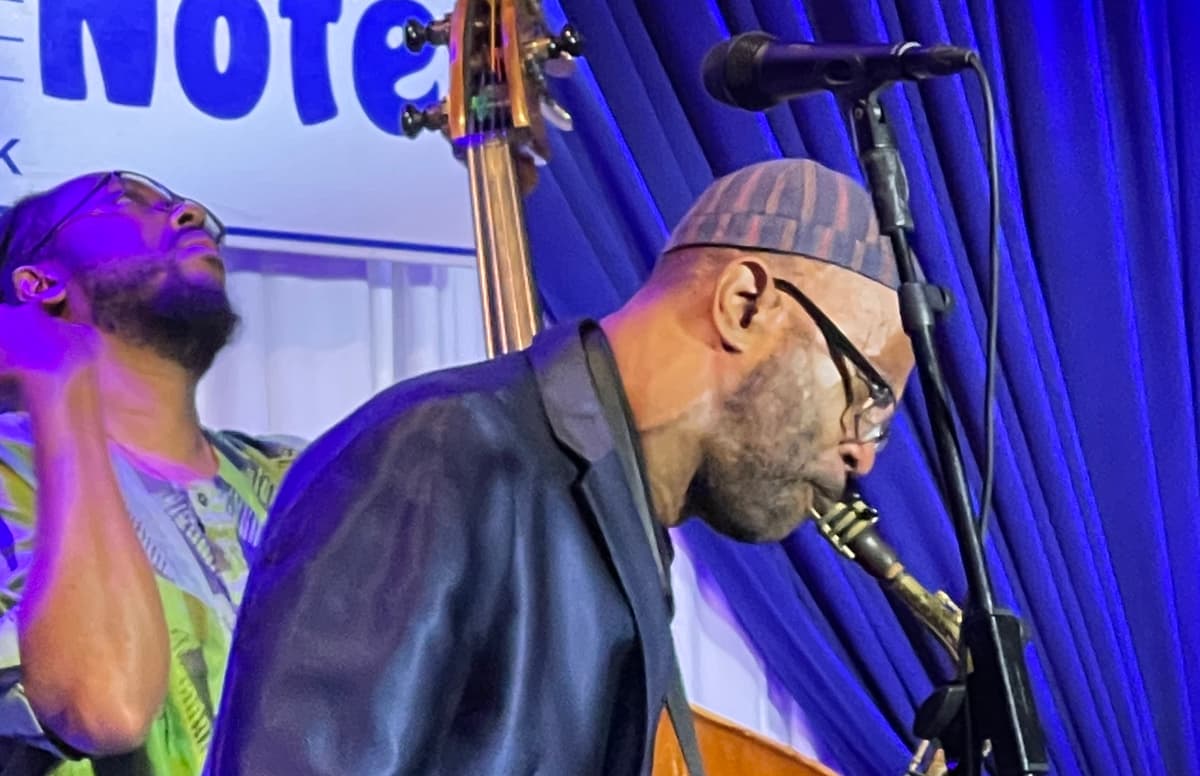Kenny Garrett Invites Listeners on a Musical Journey
His title’s reference to ancestors indicates the roots of jazz, and while the music at the Blue Note seemed especially African, the album also incorporates Caribbean elements.

Kenny Garrett
‘Sounds from the Ancestors’ (Mack Avenue Records)
It is entirely significant that Kenny Garrett has titled his new album “Sounds from the Ancestors.” Had he called it “Stories from the Ancestors,” then that would have indicated something else entirely. While stories require a narrative progression, traveling from one point to another, sounds don’t have to go anywhere, though it’s best if they are somewhere attractive to start with.
The alto saxophonist, composer, bandleader, and occasional multi-instrumentalist launched the album last week with a run at the Blue Note. The music was more intense in person, but I also enjoyed the more laid-back sounds of the studio album.
There are certain aspects of the music here that make it highly accessible. The reference to ancestors indicates the roots of jazz in the African diaspora and the pan-American influences; although the music at the Blue Note seemed especially African (granted, that means a lot of different places and sounds), the album also incorporates Caribbean elements.
There’s a lot of percussion. Most tracks have at least two drummers, and there are also several different singers. Both of those ingredients make the music user-friendly — even though the singers are vocalizing wordlessly.
Still, this is modern jazz, a music often accused of not always having a primary goal of pleasing listeners. The album consists of eight original tunes by Mr. Garrett, which deprives the listener of a road map: There may be a beginning, middle, and an end, but you’re never sure where exactly they are. Songs — and many of the numbers that post-bop jazz is built on can’t necessarily be called that — also tended to get longer and longer, and thereby tax a listener’s concentration.
Yet in Mr. Garrett’s music, these points are often virtues. The melodies are most certainly on their way to somewhere, but since you don’t know where they’re going or when they’ll get there, you have no choice but to enjoy the music in the moment. I only know that I did, along with seemingly everyone else in the crowd at the Blue Note.
About half the tunes played at the first set sounded fundamentally spiritual in nature, including the first two, “Haynes Here” and “It’s Time to Come Home.” Others, like the next two on the live show, “Hargrove” — inspired by the brilliant trumpeter who died much too young — and “When the Days Were Different,” sound like celebrations of a more physical variety. Clearly, Mr. Garrett is summoning up the philosophical ideal of Africa to create a kind of music where a call to prayer is not all that different from an invitation to party.
There’s a wide cast of players and singers on the album, but at the Blue Note he did it all with a five-piece group behind him, and he consistently made sound bigger than it was. There’s bassist Corcoran Holt plus two percussionists, Rudy Bird and trap drummer Ronald Bruner. Vocalist Melvis Santa sang wordlessly in harmony with Mr. Garrett’s alto, and thus made the group sound like it had a second horn, and she also played a shekere, effectively serving as a third percussionist. In addition to pianist Keith Brown, Mr. Garrett himself often joined in on a second keyboard when he wasn’t playing his customary alto saxophone.
The two most ambitious pieces on the album weren’t in the Sunday evening set at the Blue Note; both combine modern jazz with pan-African elements. “For Art’s Sake” is a dedication to two drummers, his one-time boss Art Blakey as well as the Nigerian percussionist Tony Allen. There’s also an elaborate, two-part work that constitutes a miniature suite unto itself, “Soldiers of the Fields/Soldats des Champs.”
Here, Mr. Garrett offers some of his most emotionally intense playing, even as he negotiates his way around a very tight military drum pattern. It reminds me of a scene in an old Western where the bad guys bully some hapless dude into dancing by shooting bullets at his feet, only Mr. Bruner is playing so fast it sounds like he’s using a machine gun.
The notion of tapping toes is a relevant one: This is postmodern jazz that you can dance to. During “Hargrove,” Mr. Garrett quoted two nursery rhymes in his solo, “This Old Man” and “Frere Jacques,” which made me wonder if he knows someone with small children at home.
At other times during the evening I heard echoes of both “Giant Steps” and “Footprints.” I then wondered if post-bop jazz has a foot fetish, but it quickly dawned on me that giant steps and footprints are entirely necessary in this kind of a musical journey.

